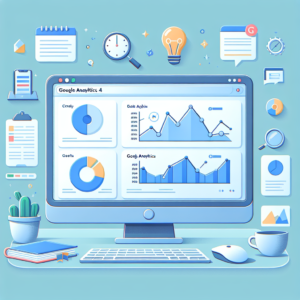**
Reduce Bounce Rate to Boost Conversions
**
When it comes to digital marketing, one of the most crucial metrics impacting your bottom line is the **bounce rate**. Simply put, a high bounce rate means that visitors are landing on your website and leaving almost immediately, without exploring any further. This is a clear indicator that something is amiss—be it your content, layout, or overall user experience. At Zenscape, we specialize in **holistic digital marketing solutions** aimed at revenue growth through our **compound growth strategy**. Our approach involves fine-tuning client retention, sales volume, transaction value, and referral systems to significantly enhance your growth. Today, we’ll delve into 13 effective strategies to reduce your bounce rate and increase your conversions.
**
1. Enhance Page Load Speed
**
It’s no secret that slow websites are a massive turn-off. Users expect fast, seamless experiences. If your site is sluggish, your bounce rate will skyrocket.
Consider the following:
By implementing these strategies, you can ensure that your pages load swiftly, leading to a lower bounce rate.
**
2. Improve Mobile Optimization
**
With more people accessing websites via mobile devices, optimizing for mobile is no longer optional. A non-responsive design will not only frustrate users but also prompt them to leave quickly.
To make your website mobile-friendly:
**
3. Craft Engaging Headlines
**
Headlines are the first thing visitors see, and they need to be compelling enough to encourage users to stick around.
Effective headline tips:
**
4. Leverage High-Quality, Relevant Content
**
No amount of SEO tricks can replace the necessity of high-quality content. Your content must be relevant, valuable, and engaging to your target audience.
Best practices include:
**
5. Optimize Call-To-Actions (CTAs)
**
A well-placed and compelling CTA can make the difference between a user converting or bouncing.
**Key elements to consider:**
**
6. Simplify Navigation
**
A cluttered and confusing navigation setup can frustrate users, leading to an early exit.
Improve your navigation by:
**
7. Minimize Pop-Ups and Ads
**
While pop-ups and ads can be effective for conversions, they can also drive users away if used excessively or intrusively.
Tips:
**
8. Enhance Internal Linking
**
Internal links not only help with SEO but also guide visitors to other relevant parts of your website, encouraging them to stay longer.
Effective internal linking strategies:
**
9. Incorporate Social Proof
**
Trust is a significant factor when visitors decide to stay on your site. Social proof elements like testimonials, reviews, and case studies can establish credibility.
Types of social proof:
**
10. Use Heatmaps and Analytics
**
Understanding user behavior can provide insights into what’s driving your bounce rate. Tools like heatmaps and analytics can show you where users click, how far they scroll, and what parts of your site they overlook.
Key tools include:
**
11. Personalize User Experience
**
Personalization can dramatically improve user engagement. Tailoring content and recommendations to individual preferences can keep users on your site longer.
Methods of personalization:
**
12. Deploy Exit-Intent Popups
**
Exit-intent popups track visitor behavior to show offers or incentives just as they are about to leave your site. This could be a discount, special offer, or a simple request for feedback.
How to use exit-intent popups:
**
13. Strengthen First Impressions with Visuals
**
First impressions matter. Visually appealing and professional-looking websites capture attention and instill trust from the get-go.
Visual enhancements:
**
Conclusion
**
Reducing your bounce rate is not an overnight task, but the rewards in terms of increased conversions and revenue growth are well worth the effort. Whether it’s through enhancing your page load speed, optimizing for mobile, or crafting compelling headlines, each of these strategies at Zenscape can significantly decrease your bounce rate and set you on a path to achieving your digital marketing goals.
If you’re serious about boosting your conversions and revenue, let’s take the first step together. **Schedule a free consultation** with one of our specialists at Zenscape and let’s discuss how we can tailor these strategies to fit your unique needs.
**
Book Your Free Consultation Now
**



